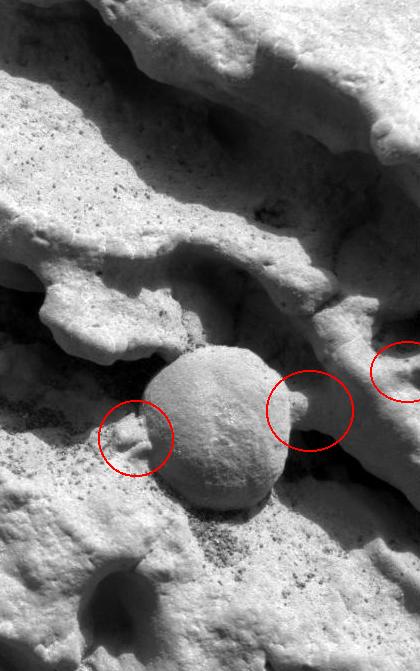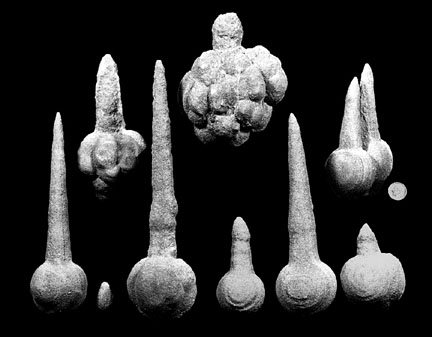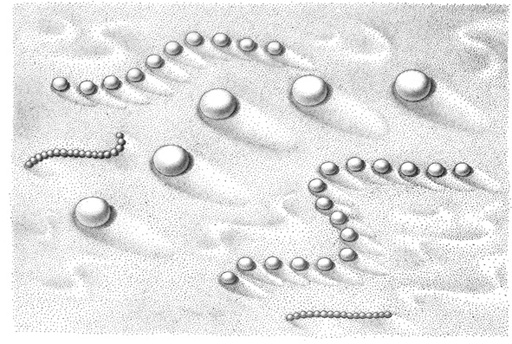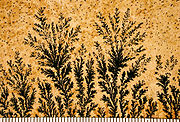 |
| The jelly-slime-fart...errrm.... I mean Dickinsonia. |
When I later returned to palaeontology it was due to a passion for evolutionary biology. It brought the fossils back to life for me again and I wanted to be a vertebrate palaeontologist, getting paid to research transitional forms and to write books about the ins and outs of evolutionary theory. Neil Shubin's work appealed to me a lot as it tied in genetics, which I also find fascinating. At this point the Ediacarans might have come to my attention, but even then they were an odd little esoteric detail. They were covered for no more than a page of a book really, which tended to amount to little more than mentioning that they are enigmatic and may have been a failed evolutionary experiment. I learnt about them at this point solely to inform me about the goings on of the Cambrian "explosion".
 |
| My favourite proposed evolutionary sequence (and ontogenetic) from the Ediacaran, going from Parvancorina to an arthropod. |
The poster presentation was done as a little competition too, from which I won a book. It was Wonderful Life by Stephen Jay Gould and as should be well known, it is about the Cambrian explosion. I found myself exposed to many of the weird beasties from the Cambrian and finding them fascinating. Vertebrates were certainly out of my mind by that point, yet evolution could still remain at the forefront. Gould briefly covered life just before the Cambrian explosion and I started to take notice, though at this point it was the Small Shelly Fossils (or Fauna) which intrigued me. They are such mysterious creatures, considering for most of them we just have microscopic bits of shell. The picture I use for this blog is Microdictyon; a SSF which was originally known by only its sclerites, until soft-bodied fossils were found, revealing it to be a lobopod worm.
| The Cambrian oddball Opabinia. |
So by this point my interest was in SSFs and the Cambrian diversification, still obsessed with evolution, having forgotten about vertebrates and embraced invertebrates. It did not take long for my obsession to switch, but I don't know how. I think I desired to see the link from Ediacarans to SSFs then through to the Cambrian diversification. It is so difficult to link these times together, I needed to know more. The Ediacarans are by far the most mysterious of the lot and the more I learn about them the more I find I do not know. There is a surprise round every corner, or in the case of palaeontology with every fossil found (and in my case with every paper or book I read). I still like the SSFs and the Cambrian diversification, but the Ediacaran has managed to enthral me with its mystique, yet like the dinosaurs of my youth they are tangible in a way. The fossils range in size, but many are large enough to make out without having to get too close. There is also a good diversity, contrary to what most books show. Your average book which mentions them, including textbooks, will show typical forms like Spriggina, Dickinsonia and Charnia. Yet I fell in love with Parvancorina and Kimberella.
The Ediacaran period is one of the most important times in evolution. Animals were evolving at this point, but exactly when we do not know. Finding the unequivocal ancestors of extant phyla is fraught with difficulty. Understanding the evolution within the Ediacaran biota is tricky, with potential relationships found all over the place. It has been included in disparate interpretations of the metaphysics of evolution. Gould supported Seilacher's Vendobiont interpretation as it expresses the contingency and happen-stance of evolution, rendering humans as mere accidents. Whereas McMenamin looked at the same interpretation and believed that some of them showed potential signs of cephalisation, which he extended to mean that they could have evolved sentience had they not met their demise! McMenamin thought that the Vendobiont hypothesis supported convergent evolution as ubiquitous and directional, whereas Simon Conway Morris, a champion of convergent evolution, saw fit to want to get rid of the Vendobiont interpretation, believing that fewer lineages meant a more directed evolution. But I have digressed a tad.
 |
| Those beautiful Ediacarans... |
What next? I doubt that my Ediacaran fondness will wane. I feel like I have found an area which I am sufficiently passionate about to study to a high level, perhaps dedicating my life to it. Other interests pop up now and again. I am interested in my local palaeobiology, enjoying studying the Permian fossils of the Zechstein Sea and their palaeoecology, but that it a side interest as it connects my home to my studies. I found trace fossils very interesting when we studied them, so fortunately there are Ediacaran trace fossils. I also really enjoyed examining the eurypterids at my local museum last summer, though I don't see that as a career prospect. I currently intend to try to find a doctorate position studying Ediacarans when I finish my degree in a year and a half's time. Watch this space.












